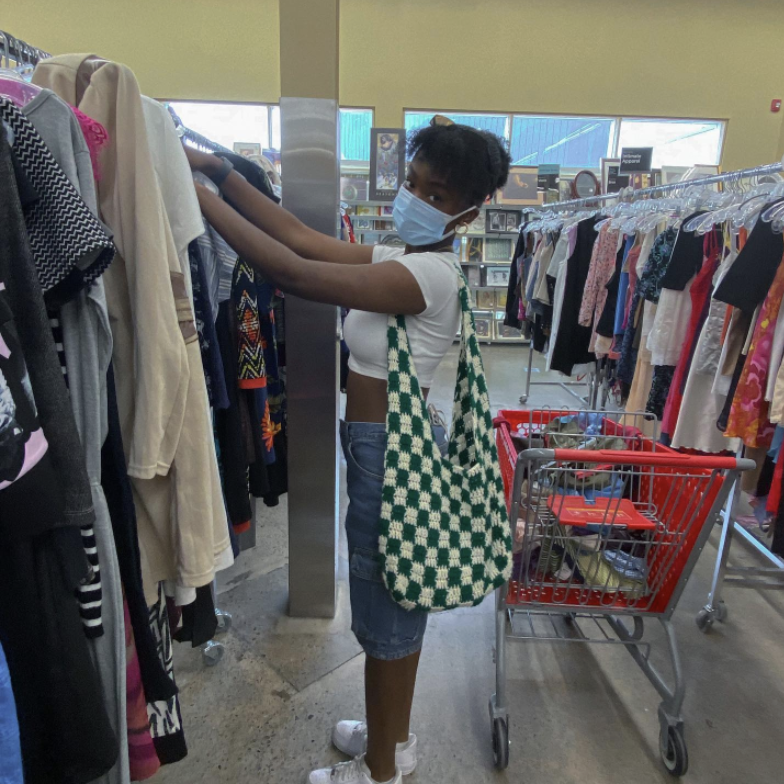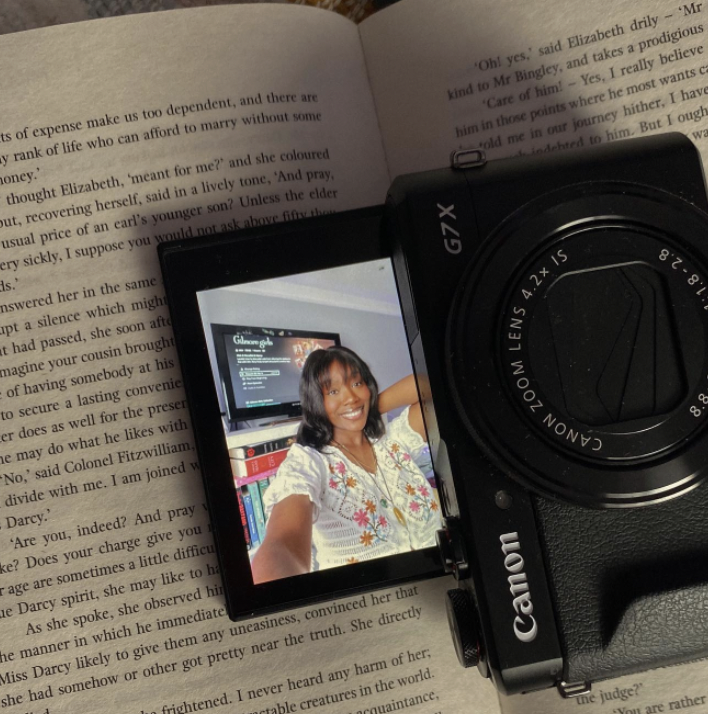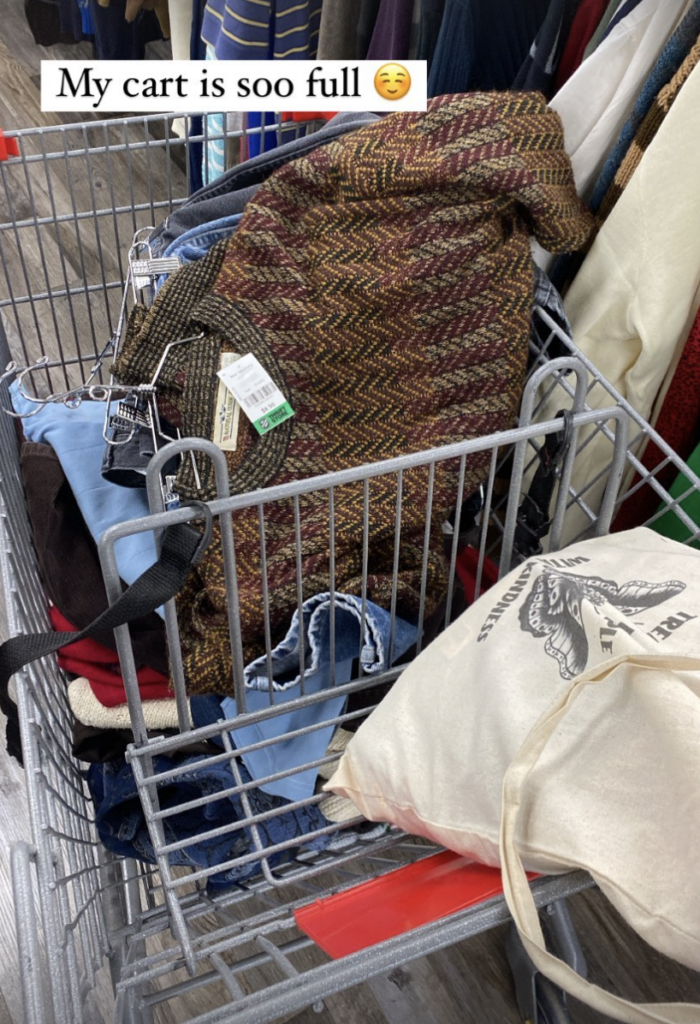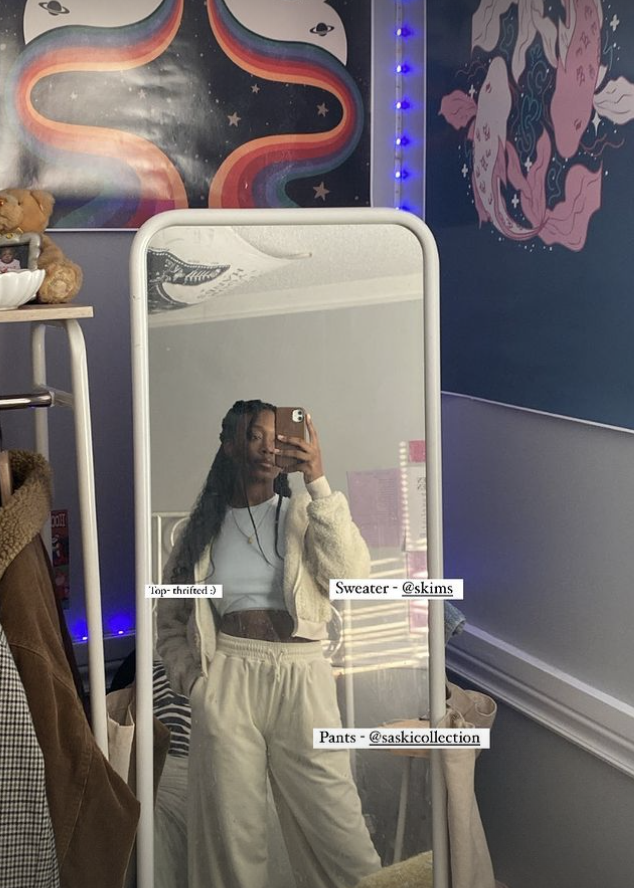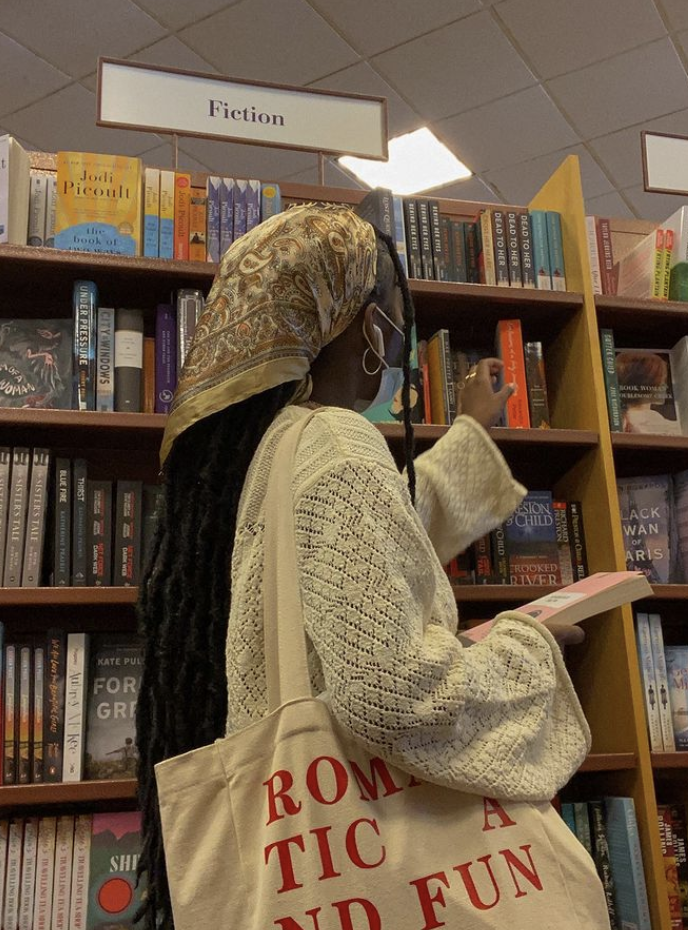By Sania Ali
When she was around 16, Tiana Pollard came across the Youtube channel BestDressed, a channel based on showcasing how to thrift clothes and Ashley Rous, the creator’s, ever-changing lifestyle. Pollard was enthralled by Ashley’s thrift videos and thrifted for the first time later that year.
When the COVID-19 pandemic put the world on halt, Pollard finally decided to make her dream of becoming a content creator real. She had wanted a platform to talk about things she was interested in like “fashion, lifestyle, reading books, and everything thrifting.” Pollard had recently been let go from her job at HomeSense and thought to herself: “You know what, if I want to do this, like I should just start now and not care what people think.”
Today, Pollard has over 123.8k followers and 3.4 million likes on TikTok, all thanks to her popular “get dressed with me” videos, featuring the Ryerson PR student styling her newest thrift addition, her grandma’s old clothes or a day in her life.
Tianna Pollard documented her thrift journeys and lifestyle on her Instagram page. (ana.pollardd/Instagram).
Although Pollard’s content dabbles in all aspects of her lifestyle, her TikTok’s focus is on thrifting and styling clothes. And after thrifting for years, she’s noticed changes in thrift stores.
“People are really just like posting their thrift hauls. But people aren’t really talking about the choices that you should be making while you’re thrifting and the ethics behind it,” says Pollard. “That is really important.”
According to a 2021 Resale report by ThredUp, thrifting is here to stay: 53 per cent of millennials and Gen Z say they’ll spend more on secondhand in the next five years. It’s no surprise that Pollard’s content was of interest to so many TikTok users.
Many individuals question whether the trend of thrifting is actually beneficial and if it’s playing a part in higher thrift store prices. Although on the surface, thrifting seems environmentally friendly, several articles disagree — stating that it’s an ‘ethicial trap.’ Pollard doesn’t think there’s anything wrong with thrifting but says it’s important to be intentional when shopping.
For Pollard, there’s two types of thrift trips. “One is where you’re just going with friends,” she says. “You’re just doing a cute little look.”
Then the other is more calculated, says Pollard, “There’s the day where I know that I want to leave there with two bags. I want to build my winter wardrobe or build my summer wardrobe for a good price and get unique pieces.”
Pollard says there should be an unspoken rule to not go out of your way to thrift in lower-income communities solely for aesthetic purposes. She recommends shopping for your summer wardrobe in the winter and vice versa, so that seasonal essentials can go to people who need them. “You shouldn’t be going out of your way to travel 30 minutes to go to another community where there’s lower-income people who need the clothes,” she says.
Speaking about fast fashion and how TikTok has educated her on the importance of buying sustainable clothes. Pollard mentions that although she used to shop at ‘Shein’ she doesn’t anymore due to the fast-fashion business model — but doesn’t judge anyone who chooses to do so either. Dr. Mark O’Connell, a professor at Seneca’s School of Fashion, says that fast fashion makes thrifting difficult because cheaply made garments don’t last long enough to be thrifted.
O’Connell agrees that gentrification in thrift shops is a problem — but overconsumption and dumping of cheap products is a much bigger issue. “A consumer desire for any sustainable fashion product is a very good thing. These trends have actually forced many changes in the industry,” he wrote via email. “Consumers have to force change with their spending choices, trends reinforce that. I don’t see any major negatives around reuse of existing fashion products.”
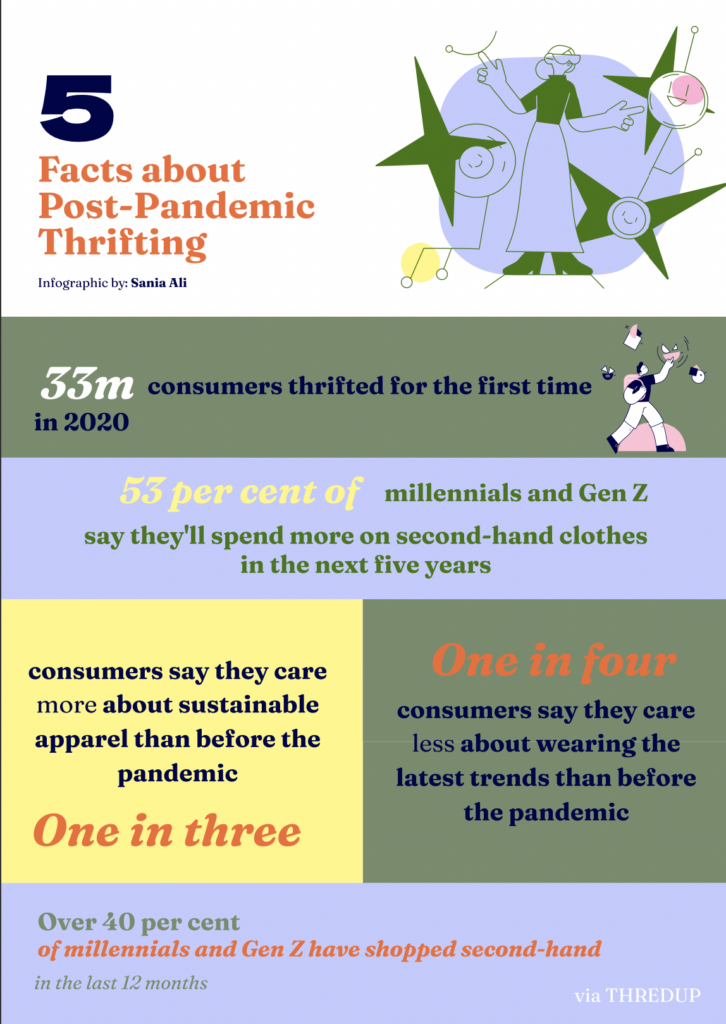
With over 40 percent of second-hand apparel consumers being Gen Z and Millennials, many individuals have caught onto the wave of thrifting and have benefitted in different ways. Tatiana Vega was able to create a business from thrifting. She has thrifted since she was young, drawn to the idea of finding rare vintage pieces that can’t be duplicated through micro trends– which are short-lived trends that gain a lot of attention but that lose that public relevance very quickly. Over the years, Vega has definitely noticed the change in thrifting culture.
“When I was in high school it was such a taboo to go to a thrift store,” says Vega. “Once I was out of university, that’s when everybody was hopping on the train and I’m like ‘that’s really weird’ because in high school, not even five or six years ago, there was still that taboo.”
Vega began her own reselling business with a friend after the trend of thrifting skyrocketed on TikTok during the pandemic. The app sparked her hardcore thrifting habits for a short period of time. She credits Gen Z for being as interested in sustainable fashion as they are.
“Nobody’s gonna say ‘I’m going to H&M’ anymore.’ It’s gonna be ‘I’m going to Value Village.’ I love that because we have way too many clothes in this world,” says Vega. “Tens of thousands of pounds of clothes are thrown out every year instead of recycled from thrifting, if we can save that from the landfill, why wouldn’t we? One person’s trash is another person’s treasure, right?”
Since the pandemic, One in three consumers care more about wearing sustainable apparel. Big brands like H&M have definitely caught wind of the recent conscious buying habits consumers have become interested in. H&M have recently implemented goals relating to sustainability, pledging to use 100 per cent sustainable materials by 2030. While H&M still operates under an unstainable fast fashion business model, brands are aware that they will lose consumers who hope to shop sustainably.
According to Retail Insider, while there are many ethical reasons to shop sustainably, social media influencers can unknowingly promote overconsumption through thrift haul videos. While this type of content may promote positive, sustainable consumer habits, it doesn’t directly promote educated consumerism. The trend is marketed as a fun way to find unique items for your wardrobe, encouraging over-consumption for bargain clothes may be fun for a season, but will end up in a landfill, the website explains. It’s important for influencers like Pollard to speak on the ethics of thrifting and show that although it can be fun, over-consumption is still detrimental and should be avoided.
“People aren’t really talking about the choices that you should be making while you’re thrifting and talking about the ethics behind it, that is really important,” Pollard says. “But I also should be holding myself accountable because I don’t talk about it either.”
Gaining thousands of views on every TikTok video, Pollard is still navigating the life of a content creator and hopes her platform can get to new heights. She shares that she still has frequent ‘pinch-me’ moments, like when her old job offered her a brand deal or when her favourite influencer followed her back.
Pollard says people are trying to make a difference and it’s important to be self-aware while shopping and there’s still always “things to learn about thrifting.”

